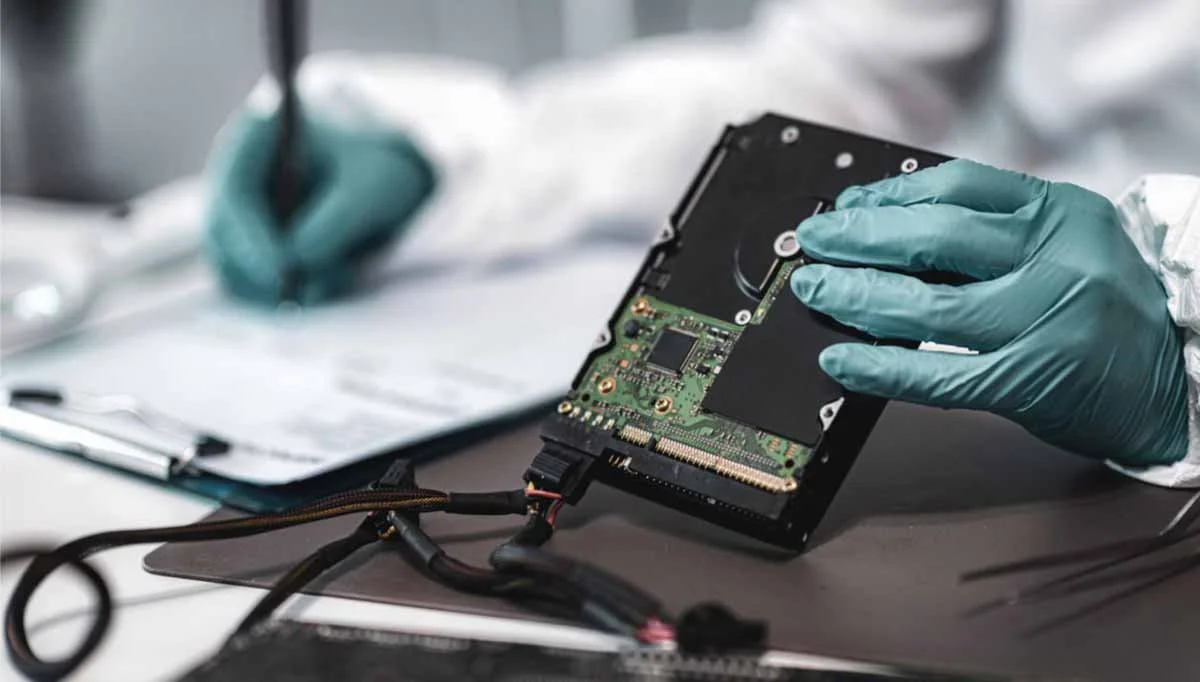Implementing an Effective Media Sanitization and Disposal Policy to Safeguard Your Data
Implementing an effective media sanitization and disposal policy is crucial for safeguarding sensitive data and protecting your organization from potential data breaches. By understanding the importance of media sanitization and following best practices, you can ensure that sensitive information is securely erased from storage devices, and the risk of unauthorized access is minimized.
What is Media Sanitization and Disposal?
Media sanitization refers to the process of securely erasing or destroying data stored on various types of storage media, such as hard drives, solid-state drives, CDs, DVDs, or magnetic tapes. This process ensures that the data is irrecoverable, and the media can be safely reused or disposed of without the risk of data breaches.
Proper media disposal is important to prevent unauthorized access to sensitive data. When storage media are no longer needed or are replaced, they should be properly sanitized to ensure that any confidential or sensitive information stored on them cannot be retrieved. Failure to dispose of media properly can lead to data breaches, financial loss, reputational damage, and legal liabilities.
Improper media disposal can have severe consequences for organizations. It increases the risk of sensitive information falling into the wrong hands, potentially leading to identity theft, fraud, or the compromise of classified data. It also violates data protection regulations and can result in significant fines and penalties.
What are the Best Practices for Media Sanitization?
There are various media sanitization standards and guidelines provided by organizations such as the National Institute of Standards and Technology (NIST) and the Department of Defense (DoD). These standards outline methods and techniques for securely sanitizing different types of storage media based on the level of sensitivity of the data stored on them.
Effective media sanitization involves following a set of guidelines to ensure that all sensitive data is properly removed from the media. These guidelines may include using certified software or hardware-based sanitization methods, verifying the effectiveness of the sanitization process through testing, and adhering to specific data sanitization procedures recommended for different types of media.
When implementing a media sanitization policy, it is important to consider the type of media being sanitized and the sensitivity of the data stored on it. Different types of media require different sanitization methods, such as physical destruction through shredding or degaussing for storage media containing highly sensitive information, or data wiping and overwriting methods for media that can be reused.
What Should a Media Disposal Policy Include?
A media disposal policy should include clear guidelines on how storage media should be handled, sanitized, and disposed of when they reach the end of their lifecycle. It should outline the roles and responsibilities of staff members involved in media sanitization, specify the approved sanitization methods for different types of media, and define the documentation and record-keeping procedures to ensure proper accountability.
A media disposal policy should also take into account data protection regulations, such as the General Data Protection Regulation (GDPR) or the Health Insurance Portability and Accountability Act (HIPAA), and ensure that the organization complies with these regulations when handling and disposing of sensitive data. It should address the legal obligations related to data protection and privacy and provide guidance on how to handle media containing personal or confidential information.
Employee training and awareness play a crucial role in the successful implementation of a media disposal policy. All employees should be educated about the risks associated with improper media disposal and trained on the proper procedures for handling and sanitizing media. Regular training sessions and awareness campaigns can help reinforce good practices and prevent human errors that could lead to data breaches.
How to Implement an Effective Media Sanitization and Disposal Policy
Implementing an effective policy requires creating a step-by-step sanitization process. This process should include pre-sanitization steps, such as data backup or migration, followed by the actual sanitization using approved methods, and post-sanitization verification to ensure the effectiveness of the process.
Documentation and record-keeping are important aspects of a media sanitization and disposal policy. They help maintain a clear audit trail of the sanitization process, provide evidence of compliance with data protection regulations, and ensure accountability for the handling of sensitive data. Proper documentation should include details such as the type of media sanitized, the sanitization method used, and the date and time of the sanitization.
To ensure the ongoing effectiveness of the media sanitization and disposal policy, regular audits and inspections should be conducted. These audits can help identify any potential gaps or weaknesses in the policy and procedures and provide an opportunity to address them promptly. Regular inspections also demonstrate to stakeholders and regulatory bodies that the organization is taking data security seriously.
What are the Different Methods of Media Sanitization?
Physical destruction methods involve physically damaging the storage media to render data irrecoverable. This includes methods such as shredding, disintegration, degaussing, or incineration. These methods are typically used for media that cannot be reused or recycled due to their sensitive nature.
Data sanitization techniques involve the secure erasure of data from storage media using software-based methods. These techniques include data wiping, which overwrites data with random patterns, and data erasure, which removes data by resetting or reprogramming the media. These methods are suitable for media that can be reused or repurposed.
Regardless of the method used, it is crucial to ensure complete data removal from storage media. This requires a thorough understanding of the media type and the associated data storage mechanisms. It is important to consider factors such as hidden or residual data, bad sectors, and the effectiveness of the sanitization method to ensure that no traces of sensitive information remain.

